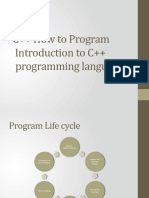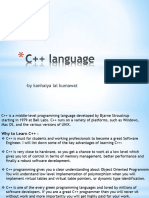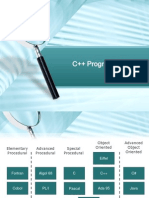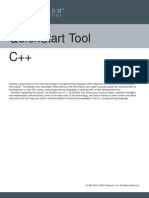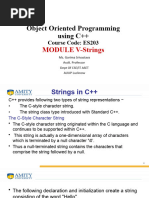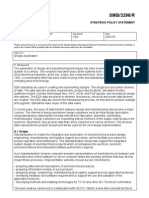0 ratings0% found this document useful (0 votes)
29 viewsCPP 8
The document discusses overloading the "<<" operator to define how a class is output to streams like stdout. It notes that the "<<" operator is used to output to an output stream, with the left-hand side as a parameter. The return type should be the output stream from the left-hand side. An example shows overloading "<<" for a Queue class to output its contents between brackets with commas between elements.
Uploaded by
api-3697260Copyright
© Attribution Non-Commercial (BY-NC)
Available Formats
Download as PDF, TXT or read online on Scribd
0 ratings0% found this document useful (0 votes)
29 viewsCPP 8
The document discusses overloading the "<<" operator to define how a class is output to streams like stdout. It notes that the "<<" operator is used to output to an output stream, with the left-hand side as a parameter. The return type should be the output stream from the left-hand side. An example shows overloading "<<" for a Queue class to output its contents between brackets with commas between elements.
Uploaded by
api-3697260Copyright
© Attribution Non-Commercial (BY-NC)
Available Formats
Download as PDF, TXT or read online on Scribd
You are on page 1/ 1
Overloading “<<”
• The “<<” operator is used to output to a
stream.
Intro to C++ part 8 • This defines how the class is output to
files, including stdout.
Daniel Wigdor with data from:
1. Richard Watson, notes on C++
2. Winston, P.H., “On to C++”
ISBN: 0-201-58043-8
How to do it Things to Note
• The “<<” operator is used to output to an • Note that LHS is a param, unlike previous
output stream. examples, where it was implicitly “this”.
• The return type should be the ostream • This is because the operator is defined
from the lhs. outside the ostream class.
• Template (note: first param is lhs): • Why return the lhs as the value of the
ostream& operator <<(ostream& os, right param) { statement?
statements
// ... • So this will work:
return os; cout << q << r << s;
}
Example: << for Queue
ostream& operator << (ostream& os, Queue &q) {
int n = q.Size();
os << "[";
for (int i = 0; i < n; i++) {
char c = q.Dequeue();
os << c;
q.Enqueue(c);
if (i < n-1) { os << ","; }
}
os << "]";
return os;
}
• Note we can’t access the “contents” array
directly – this is both good and bad.
You might also like
- Operator Overloading: CSC-210: Object Oriented ProgrammingNo ratings yetOperator Overloading: CSC-210: Object Oriented Programming6 pages
- C++ Tevhnical Paper Presentation With Some Changes100% (1)C++ Tevhnical Paper Presentation With Some Changes117 pages
- Quickstart Tool C++: ©1995-2004 Cnet Networks, Inc. All Rights ReservedNo ratings yetQuickstart Tool C++: ©1995-2004 Cnet Networks, Inc. All Rights Reserved10 pages
- C++ Basics: - Object-Oriented-Programming Language - C++ TerminologyNo ratings yetC++ Basics: - Object-Oriented-Programming Language - C++ Terminology9 pages
- 3.JavaIdentifiers, Data Types, OperatorsNo ratings yet3.JavaIdentifiers, Data Types, Operators40 pages
- WINSEM2024-25_BCSE102L_TH_VL2024250504101_2025-04-02_Reference-Material-INo ratings yetWINSEM2024-25_BCSE102L_TH_VL2024250504101_2025-04-02_Reference-Material-I19 pages
- Certification Reports Results of U.S. E.P.A. Standard EvaluationsNo ratings yetCertification Reports Results of U.S. E.P.A. Standard Evaluations8 pages



























